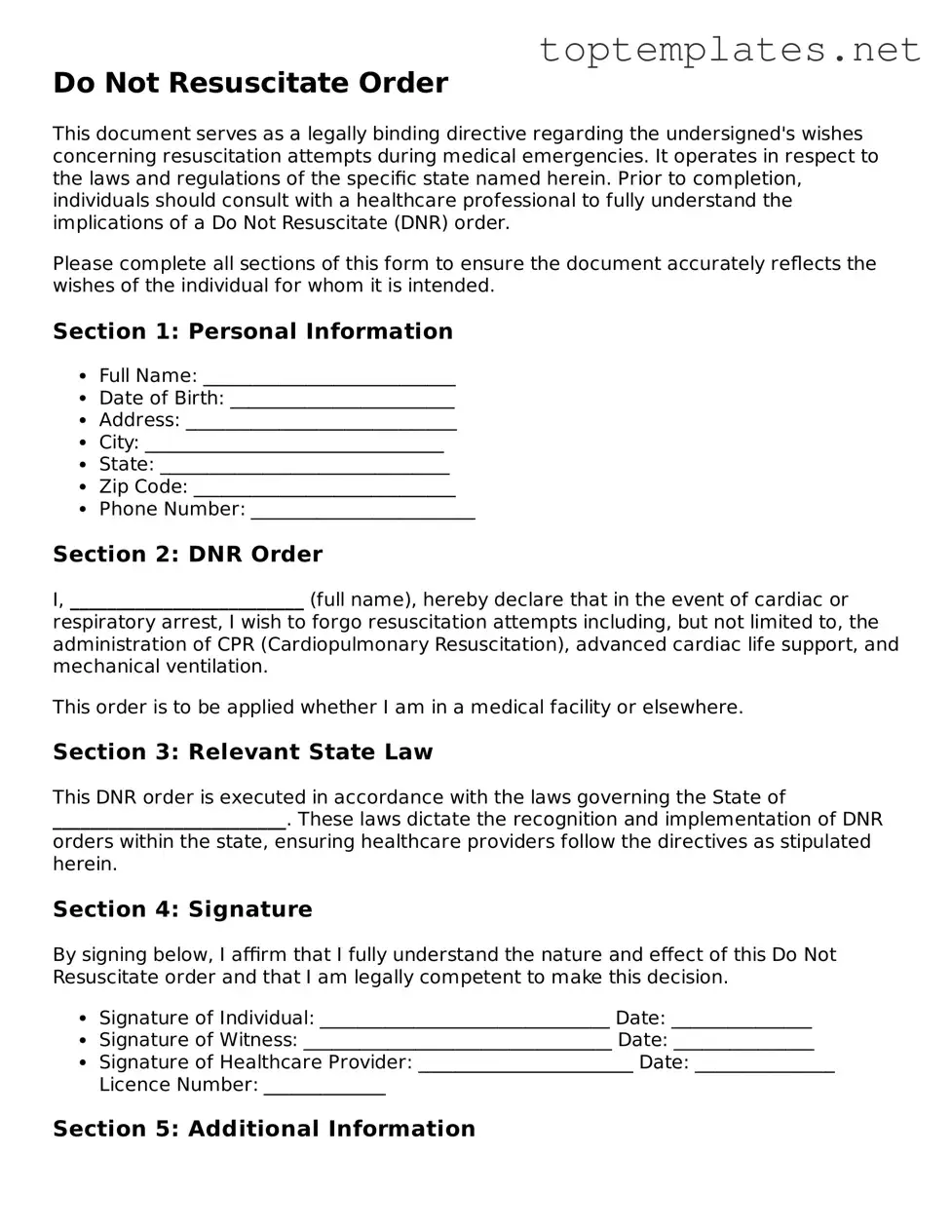Do Not Resuscitate Order
This document serves as a legally binding directive regarding the undersigned's wishes concerning resuscitation attempts during medical emergencies. It operates in respect to the laws and regulations of the specific state named herein. Prior to completion, individuals should consult with a healthcare professional to fully understand the implications of a Do Not Resuscitate (DNR) order.
Please complete all sections of this form to ensure the document accurately reflects the wishes of the individual for whom it is intended.
Section 1: Personal Information
- Full Name: ___________________________
- Date of Birth: ________________________
- Address: _____________________________
- City: ________________________________
- State: _______________________________
- Zip Code: ____________________________
- Phone Number: ________________________
Section 2: DNR Order
I, _________________________ (full name), hereby declare that in the event of cardiac or respiratory arrest, I wish to forgo resuscitation attempts including, but not limited to, the administration of CPR (Cardiopulmonary Resuscitation), advanced cardiac life support, and mechanical ventilation.
This order is to be applied whether I am in a medical facility or elsewhere.
Section 3: Relevant State Law
This DNR order is executed in accordance with the laws governing the State of _________________________. These laws dictate the recognition and implementation of DNR orders within the state, ensuring healthcare providers follow the directives as stipulated herein.
Section 4: Signature
By signing below, I affirm that I fully understand the nature and effect of this Do Not Resuscitate order and that I am legally competent to make this decision.
- Signature of Individual: _______________________________ Date: _______________
- Signature of Witness: _________________________________ Date: _______________
- Signature of Healthcare Provider: _______________________ Date: _______________ Licence Number: _____________
Section 5: Additional Information
For individuals under the care of a guardian, or if there are any durable power of attorney considerations, additional documentation may be required. These documents should be reviewed in conjunction with this DNR order to ensure all directives are harmonious and clearly understood by all parties involved.
It is recommended that copies of this DNR order be provided to the individual’s primary care physician, local hospital, and any relevant healthcare agencies to ensure the individual's wishes are known and can be readily accessed in an emergency.
